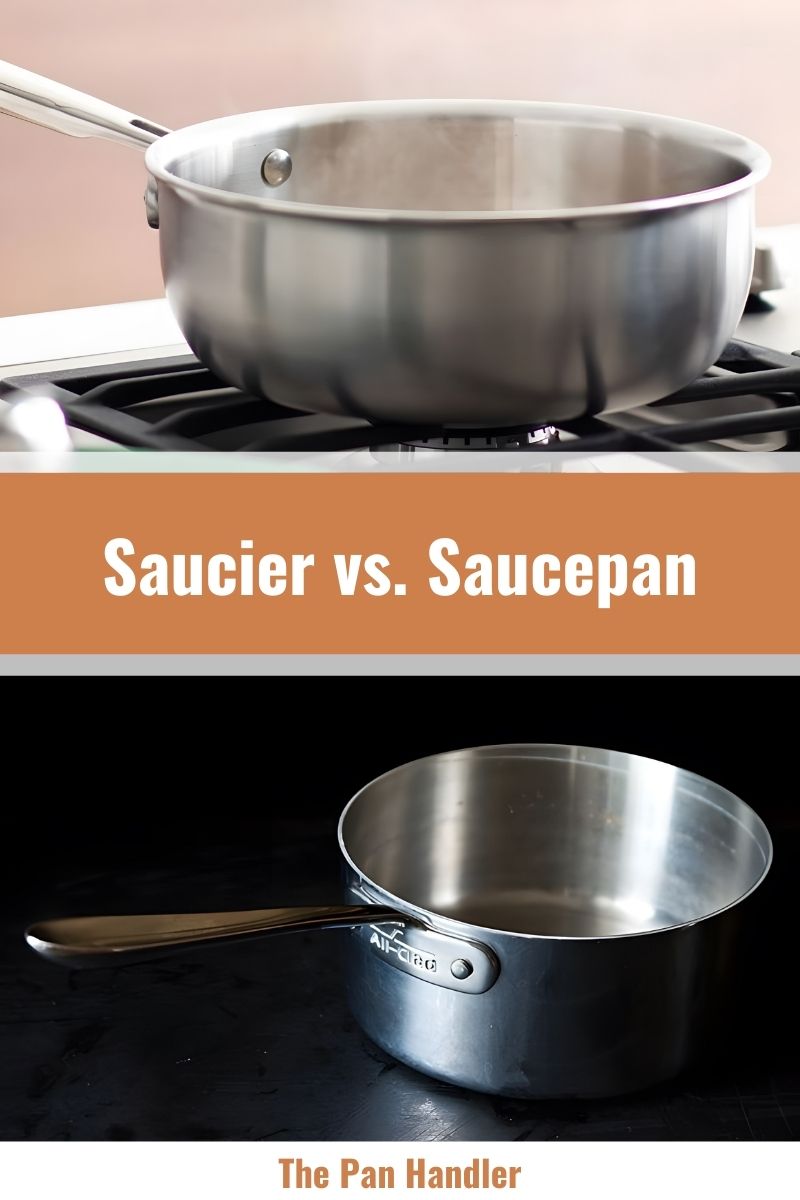
Nowadays, there are many different kinds of cookware, and most of them look just like the one before.
Most of the time, their names also sound the same, but they work in different ways. This article will help you choose the right pan between saucier vs. saucepan.
What is a Saucepan?
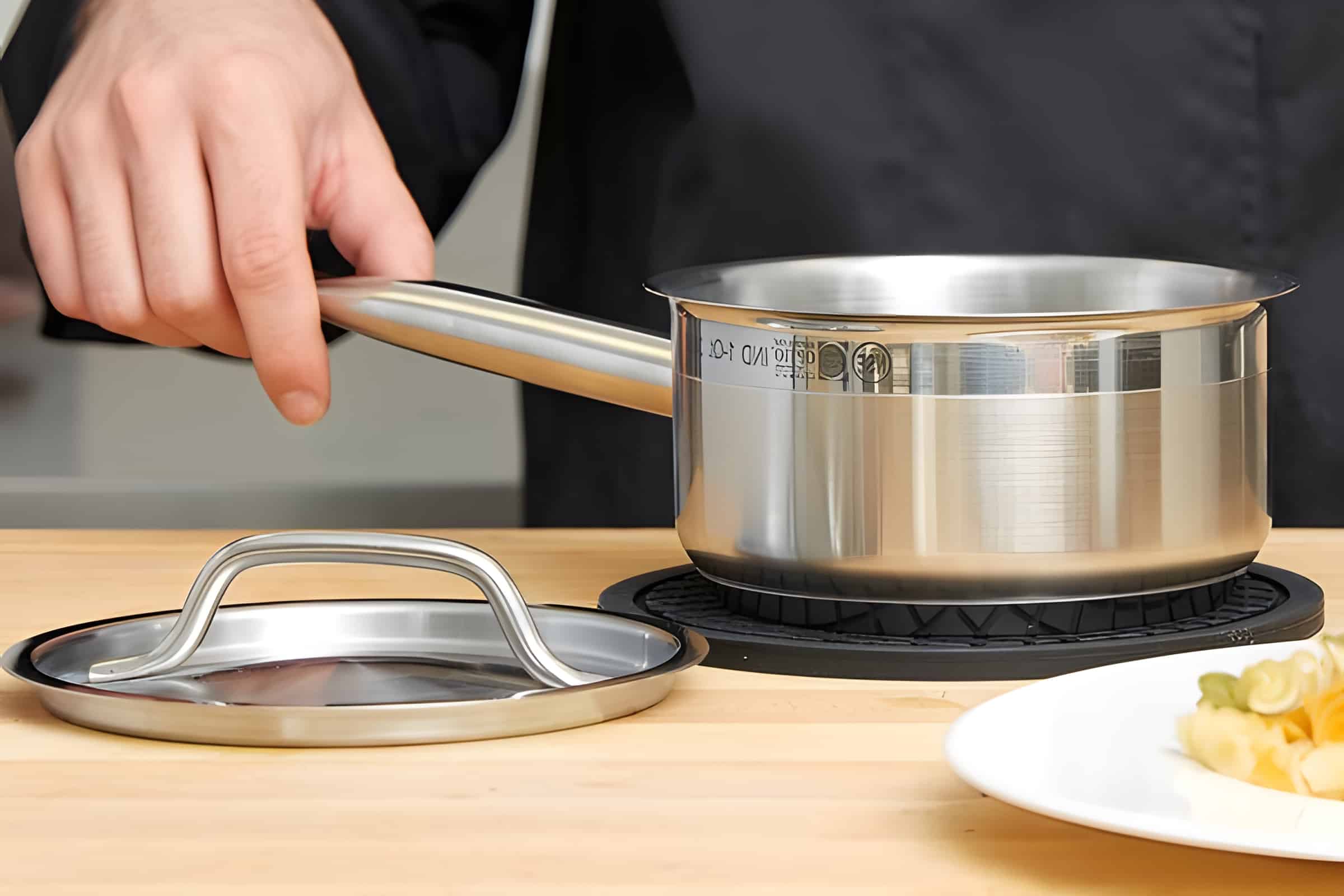
A saucepan is kitchen cookware that has straight sides and a handle. It’s a common type of pan used daily for soups and stews.
They are an excellent type of pan to use for sauces since they can hold a larger volume of liquid compared to other types of pans.
A small saucepan will do if you only cook for yourself at home. On the other hand, families of 3 or more might need a larger pan depending on how much food they consume at one go.
The vertical sides will help minimize spills and accidents while cooking.
If you need something that can quickly cook food without problems and on a budget, you might as well go for a saucepan since it can do its job well.
It’s not that expensive, compared to a saucier pan, but some downsides come with it as we continue further in this article.
Cooking foods that stick into the pan is easy with a saucepan since it has straight sides that you can easily reach with one giant sweep.
You can now make pasta without worrying that there are some unmixed parts inside. However, it would be best if you considered that the food might stick onto the edges of the saucepan and can be very hard to remove and clean.
What is a Saucier?
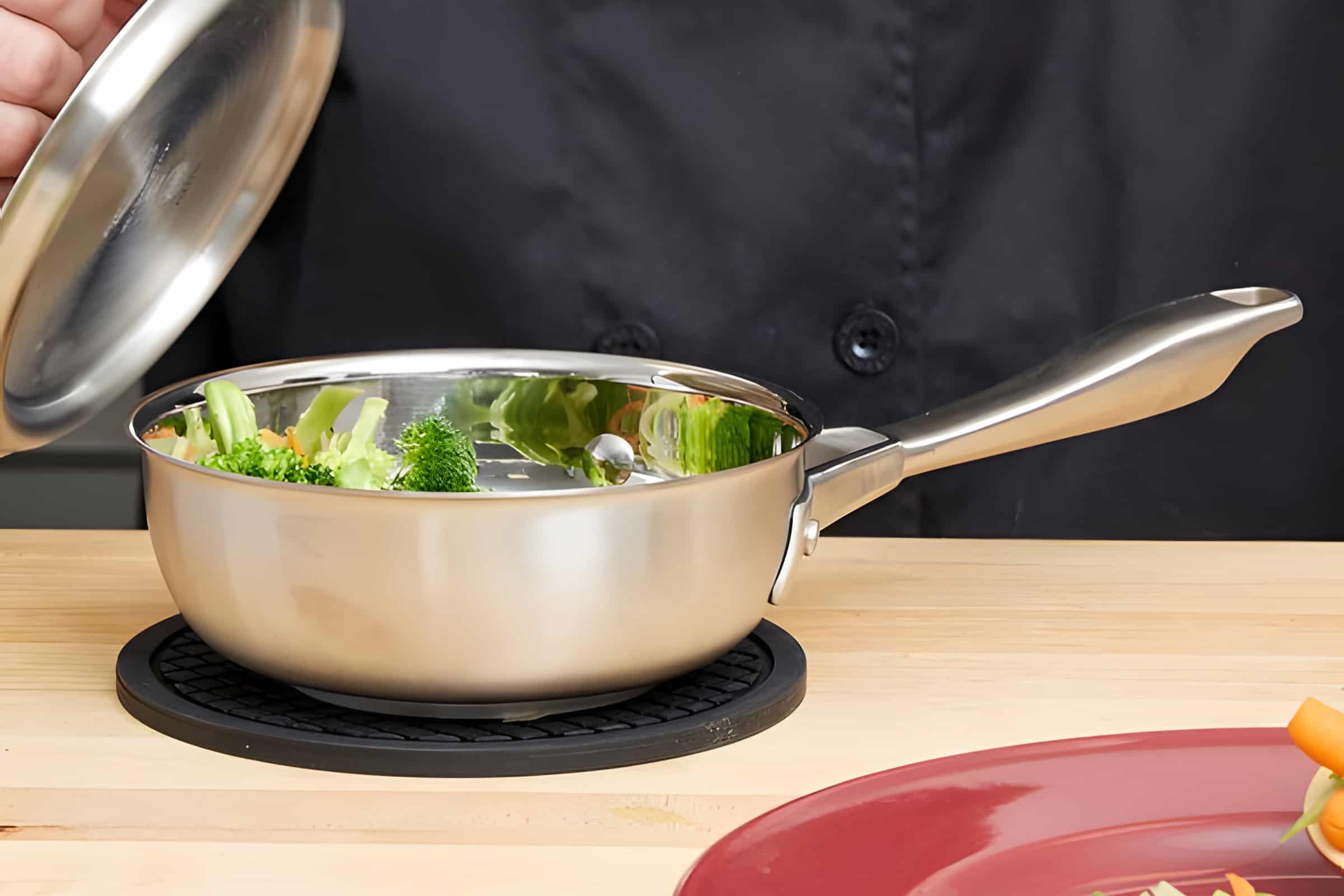
A saucier is a particular saucepan used for more active cooking, such as stirring and whisking.
It has a round base with sloped sides, making the top of it bigger than the bottom. The bottom part is slightly thicker than the sides to ensure even heat in all parts of the pan.
Because of its rounded design, a saucier is better and more efficient than a saucepan.
Burning foods have a minimal chance with this type of pan, and you can make sure that your food is evenly cooked. You’d also be able to easily access any ingredient in the pan because of its wide brim.
Investing in a saucier pan is something that you should really think about since it does not come cheap.
While it may be pricey, it can do a whole lot more compared to a regular saucepan, and it’s an excellent kitchen cookware to have in the long run. If you want to find out which one to buy, you may also want to check this video below.
Since it has a rounded shape and large food volume capacity, you can use a saucier for almost everything, including cooking rice, vegetables, stocks, and soups, to name a few.
However, since it has round, angled sides, if you’re trying to make a reduced sauce, you’ll need to do it for a bit longer than usual.
What are their Differences?
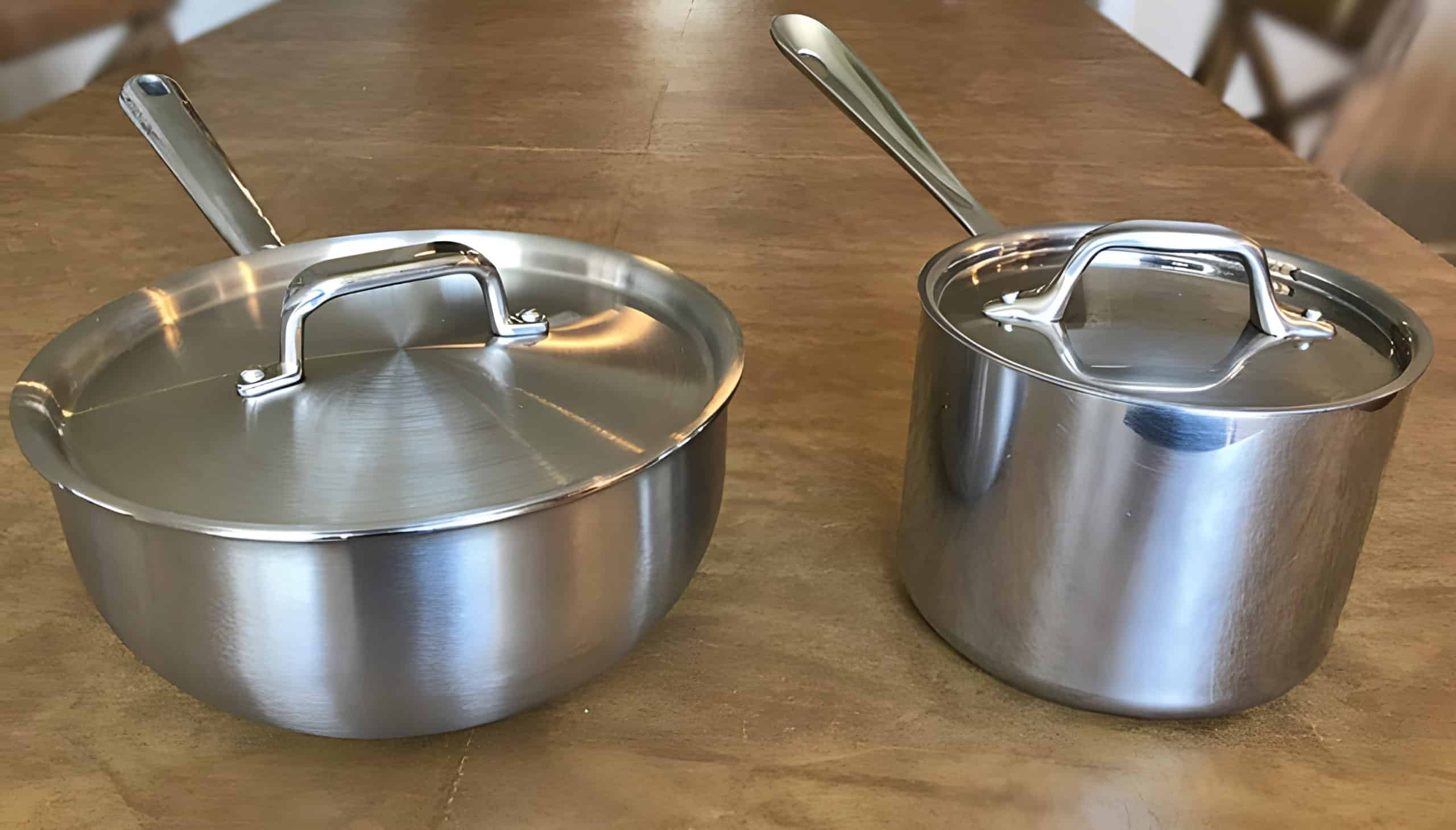
Now that you know what these two pans are, it’s time to list their differences and find out which one is better to use. Check all of their comparisons below.
- Design and Shape: The easiest way to differentiate a saucier from a saucepan is by its design. A saucier looks more like a bowl with a handle. It has a round figure with a semi-circle side profile. On the other hand, a saucepan is edgier with straight sides and a side profile of a square with soft edges.
- Cost: Whenever you buy something, you must always take note of its price, especially if you are following a budget. Do not buy something that’s wholly overpriced if you can buy a similar quality for half the cost.
- Surface Area for Cooking: In choosing which pan to buy, you must consider the Cooking Surface Area of a specific pan. This pertains to how much food it can handle and cook. Generally speaking, the straight sides of a saucepan largely reduce its cooking surface area.
- Easy to Use: Both saucepan and saucier can be used for many different things when it comes to use. But if you were to ask professional chefs and experienced cooks, they prefer sauciers over saucepans when it comes to ease of use. The sloped edges of a saucier help cook food evenly and avoid getting food stuck on the edges. Your food won’t burn too quickly, which is a big plus.
- Versatility: Both the saucier and saucepans are such versatile pieces of cookware that you can use to cook almost anything you want. However, using a saucier might be more accessible because of its round edges. Some of the dishes that are better cooked in a saucier are soups, stews, and sauces.
- Easy to Clean: Since a saucepan has straight edges and is more vulnerable to burning, it’s understandably more complicated to clean than a saucier. Sometimes, food gets stuck on the edges, making it hard to remove even if you scrub it more. Another downside is that scrubbing can cause more harm than good to the saucepan.
Things to Consider when Buying a Saucier or a Saucepan
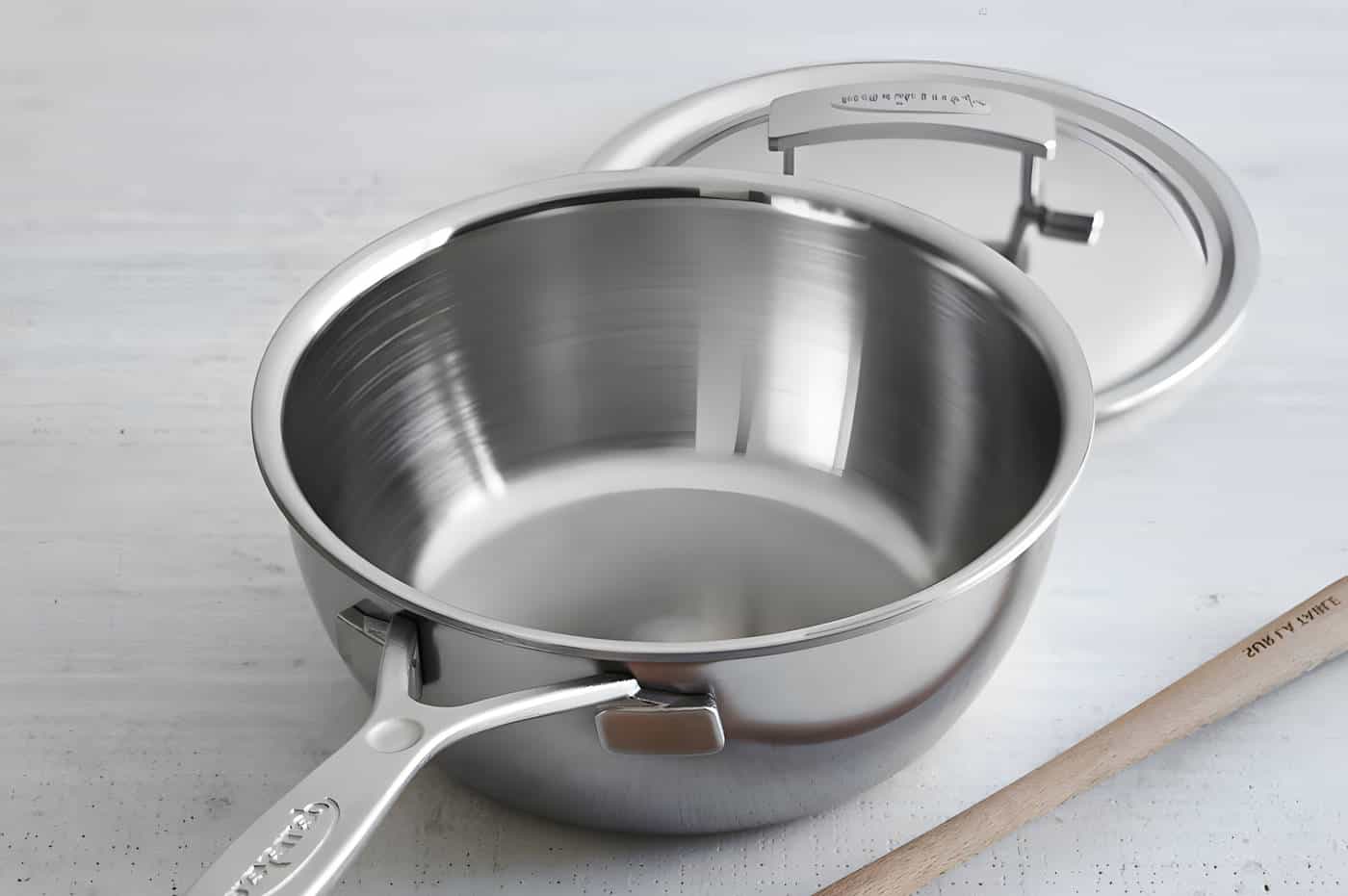
Since we’ve covered all of the differences between a saucier and a saucepan in the previous section, you may already have an idea of which one you want to buy.
We will tell you what you should look for in a pan when you are ready to buy one in this next part. The items listed below are the most important characteristics that most people consider in buying a saucier or a saucepan.
- Pan’s Weight: The first factor on our list is the pan’s weight. This isn’t much of a big deal but, instead, a preference of the one using it. If you like working around in your kitchen, getting the right pan weight will help you. Heavier pans are harder to carry around, while lighter pans may be too easy to lift and cause accidental spills.
- Balance: Balance is another critical factor that you need to look for in a saucepan or saucier. Each pan has a body and a handle most of the time. It would help if you made sure that the handle was not too heavy so that you could use your pans for anything. It’s also important to consider so that your food won’t spill.
- Non-Reactive: One of the things you need to consider when buying a saucier or a saucepan is if it is non-reactive. Most of the time, you will be using these pans for cooking sauces and soups, which are acidic. You may want to play it safe and choose a non-reactive pan that can last you a long time.
- Oven-Safe: If you are a big fan of using your pans for cooking food in the oven, make sure to choose an oven-safe pan. You don’t want to risk it if a pan’s not safe to put inside an oven. It can cause significant accidents, so it’s better to be safe. But if you are not a big fan of using your pans in the oven, you can choose to skip this one.
Frequently Asked Questions
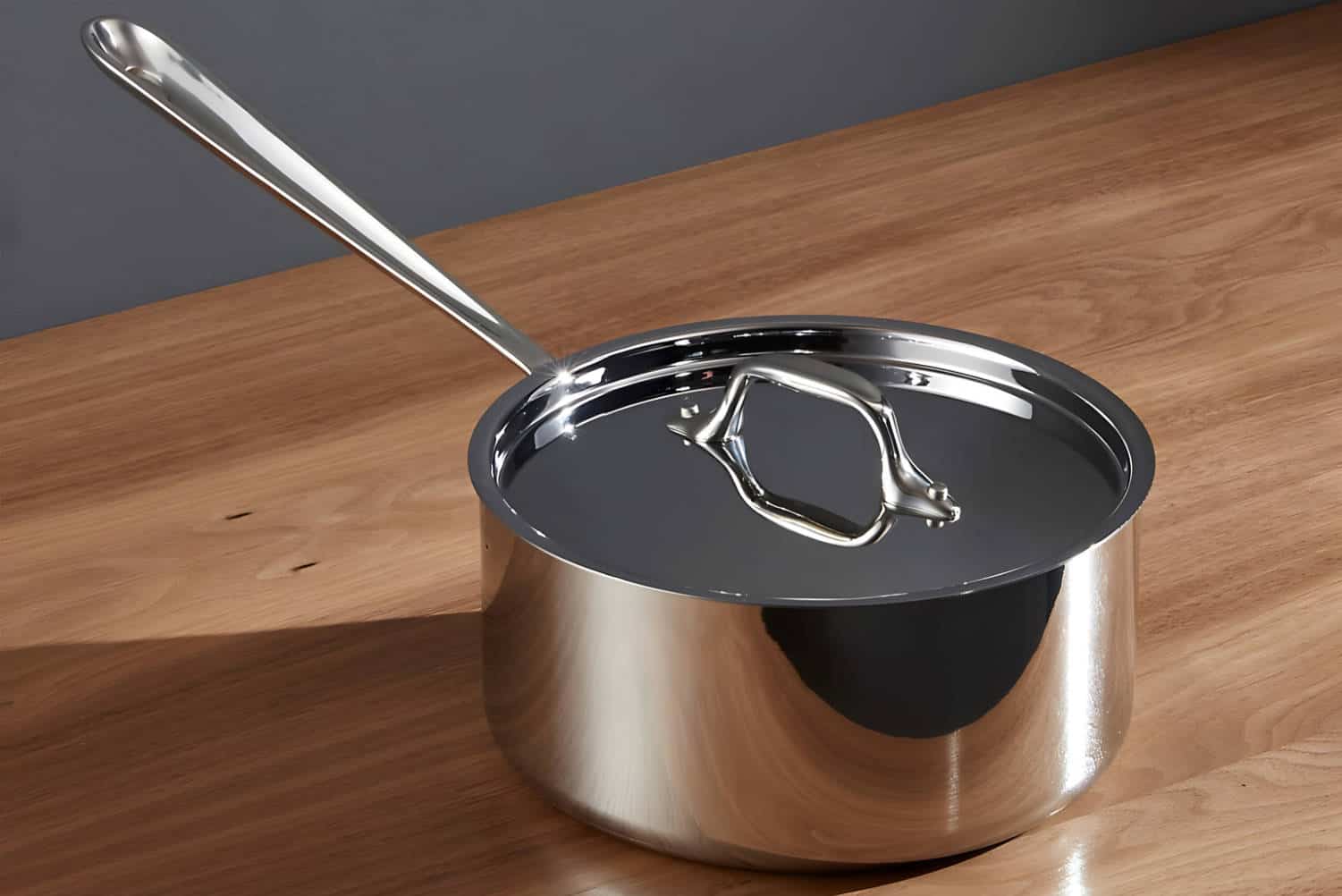
By this point, you now have a clear understanding of the difference between a saucier and a saucepan.
Before you decide which one you should buy, read this section first to find out about the most frequently asked questions related to the topic.
Should I consider a pan’s height?
If you are wondering, yes, it is a feature that should be considered, especially if you have a large family.
Cooking a lot of food at one go can be challenging if you don’t have enough area to hold all the food. Make sure to choose a taller saucier or saucepan if you need to cook for many people at once.
Should I buy stainless steel pans or cast iron pans?
If you are looking for a pan that can last for a long time, stainless steel is the way to go since they do not rust like iron.
It’s also easier to clean than a cast iron one, and most of them are oven-safe since they can withstand the hottest temperatures. On the other hand, cast iron is suitable for people who want faster cooking time and lesser food volume.
Is the number of people I cook for necessary?
In buying different pots and pans, you should always consider the number of people you cook for. If you’re only cooking for yourself or you and a partner, you can buy smaller pan sizes.
However, if you are cooking for a family of 5 or more, you need to consider buying large pans that can hold large volumes of food.
Can I use a Saucier to replace a Saucepan?
The answer is yes; you can use a saucier to replace a saucepan but only when necessary. A saucepan is generally edgier and shorter in height since it only stands 8 to 9 inches.
On the other hand, a saucier is round and taller, with 12 inches as its standard. You can use a saucier for cooking food that you can also cook in a saucepan.
Nowadays, there are many different kinds of cookware, and most of them look just like the one before.
Most of the time, their names also sound the same, but they work in different ways. This article will help you choose the right pan between saucier vs. saucepan.
Summary
Choosing the right cookware between the saucier vs. saucepan can be very confusing since they sound the same and look similar.
We hope that this article helped you understand the difference between these two pans so that you’ll know when to use each one.


Michael Johnson is the founder of Pan Mastery, Inspired by his blacksmith grandfather’s legacy has a deep appreciation for hand-crafted pots and pans, he provides invaluable guides, reviews, and recipes to enhance your culinary journey.

